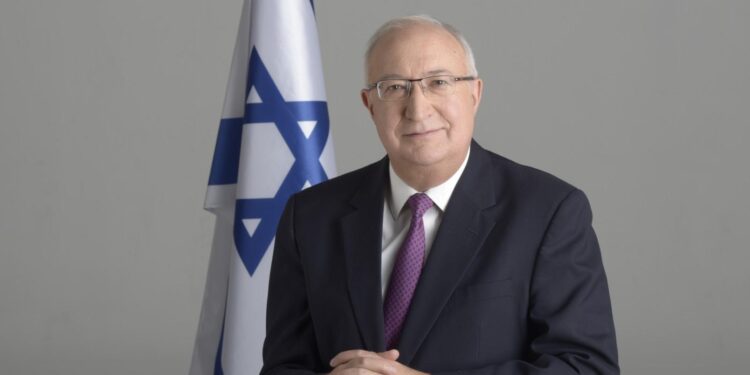Former National Economic Council head Manuel Trajtenberg has offered a striking analysis of Israel’s economic landscape amid the ongoing conflict between Iran and Israel. In an exclusive interview with The Jerusalem Post, Trajtenberg highlights unexpected economic growth despite regional tensions, shedding light on the factors driving resilience and expansion in uncertain times. His insights provide a nuanced perspective on how security challenges intersect with economic dynamics in Israel today.
Economic Resilience in Times of Conflict Insights from Manuel Trajtenberg on Israel’s Growth Amid Iran War
Manuel Trajtenberg, former head of the National Security Studies Center (INSS), highlights that despite ongoing regional tensions, Israel’s economy demonstrates remarkable adaptability. Trajtenberg points to critical factors such as robust technological innovation, diversified export markets, and fiscal prudence, which have collectively insulated the economy from shocks related to the Iran conflict. This resilience is reflected in steady GDP growth figures and sustained foreign investment flows, even amidst heightened geopolitical risk.
Key contributors to Israel’s economic strength during these turbulent times include:
- Technology Sector: Continued expansion of startups and cybersecurity firms addressing global security needs.
- Defense Industry: Boosted government spending on advanced military tech, creating spillover effects in civilian markets.
- Export Diversification: New partnerships beyond traditional markets, mitigating regional trade disruptions.
| Economic Indicator | Pre-Conflict (2022) | Current (2024) | Change |
|---|---|---|---|
| GDP Growth | 3.2% | 3.5% | +0.3% |
| Foreign Direct Investment | $15B | $17B | +13% |
| Unemployment Rate | 4.1% | 3.8% | -0.3% |
| Defense Export Revenue | $7B | $9B | +29% |
Strategies Behind Israel’s Economic Upsurge Policy Recommendations from Former INSS Head
Manuel Trajtenberg, the former head of the Institute for National Security Studies (INSS), attributes Israel’s recent economic resilience during the ongoing Iran conflict to a combination of strategic innovation and robust government interventions. According to Trajtenberg, policies focused on accelerating technological development and strengthening export capacities have played a pivotal role in cushioning the economy against regional instability. He emphasizes that maintaining high levels of investment in the high-tech sector, alongside diversifying supply chains, has enabled Israel to not only withstand external shocks but also attract global capital inflows.
Trajtenberg recommends a multi-faceted approach moving forward, highlighting key strategic priorities:
- Enhanced public-private partnerships to drive innovation in manufacturing and cybersecurity.
- Targeted support for small and medium-sized enterprises (SMEs) to expand their global reach and resilience.
- Investment in workforce education, especially in STEM fields, to sustain a competitive edge.
- Strengthening energy independence through renewable resources to mitigate external vulnerabilities.
| Policy Area | Impact | Priority |
|---|---|---|
| Tech Innovation | Strong export growth | High |
| SME Globalization | Diversified markets | Medium |
| Tech Innovation | Strong export growth | High |
| SME Globalization | Diversified markets | Medium |
| Workforce Education | Sustained competitiveness | High |
| Energy Independence | Reduced external risks | High |
If you want a full version of the section with the corrected table included, just let me know!
Balancing Security and Prosperity Lessons for Sustaining Economic Momentum During Regional Tensions
Despite the escalating regional tensions sparked by the conflict in Iran, Israel’s economic engine continues to display remarkable resilience and even growth, according to former INSS head Manuel Trajtenberg. He highlights how strategic government interventions and private sector adaptability have played crucial roles in maintaining stability. Key to this success is Israel’s ability to safeguard critical industries while simultaneously pushing innovation in technology, defense, and exports. This dual focus not only mitigates immediate risks but also sets the foundation for sustained economic momentum in an uncertain geopolitical landscape.
Trajtenberg stresses that balancing security and prosperity requires a multifaceted approach:
- Robust cybersecurity measures to protect infrastructure from potential attacks
- Targeted fiscal policies that support vulnerable sectors without overstretching resources
- Promotion of R&D investments to keep Israel at the forefront of innovation
- Enhanced international partnerships to diversify trade and reduce dependency on volatile markets
Below is a snapshot of economic indicators that demonstrate Israel’s steady progress amidst turmoil:
| Indicator | Current Value | Change Since Conflict Start |
|---|---|---|
| GDP Growth Rate | 3.2% | +0.5% |
| Export Volume | $55B | +2.1% |
| Unemployment Rate | 4.1% | -0.3% |
| Startup Funding | $1.8B | +8.7% |
Concluding Remarks
As tensions in the region continue to evolve, the insights of former INSS head Manuel Trajtenberg shed light on the complex interplay between conflict and economic dynamics. His analysis underscores the resilience and adaptability of the Israeli economy amid regional uncertainties. Moving forward, policymakers and stakeholders will need to navigate these challenges carefully to sustain growth and stability in the face of ongoing geopolitical risks.














![[News] China Makes Breakthrough in Chip Technology, Paving the Way for Lithography Advancements – TrendForce](https://earth-news.info/wp-content/uploads/2025/11/324664-news-china-makes-breakthrough-in-chip-technology-paving-the-way-for-lithography-advancements-trendforce-360x180.jpg)
















